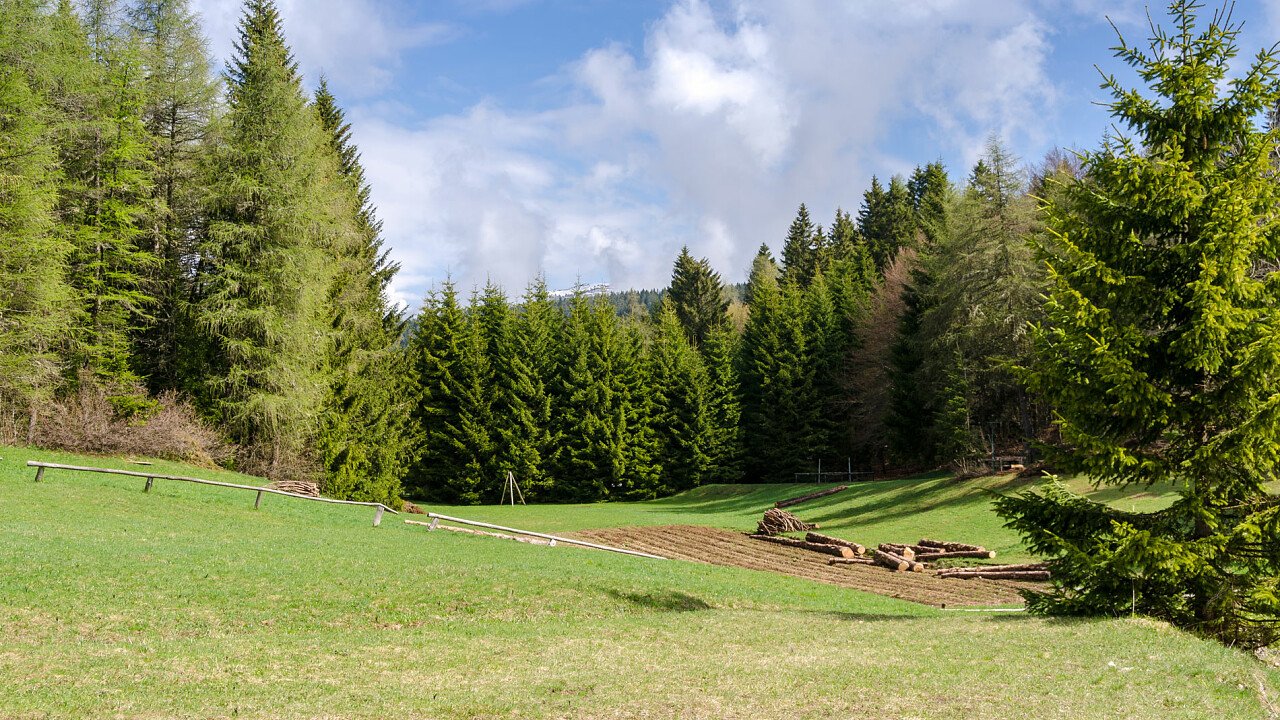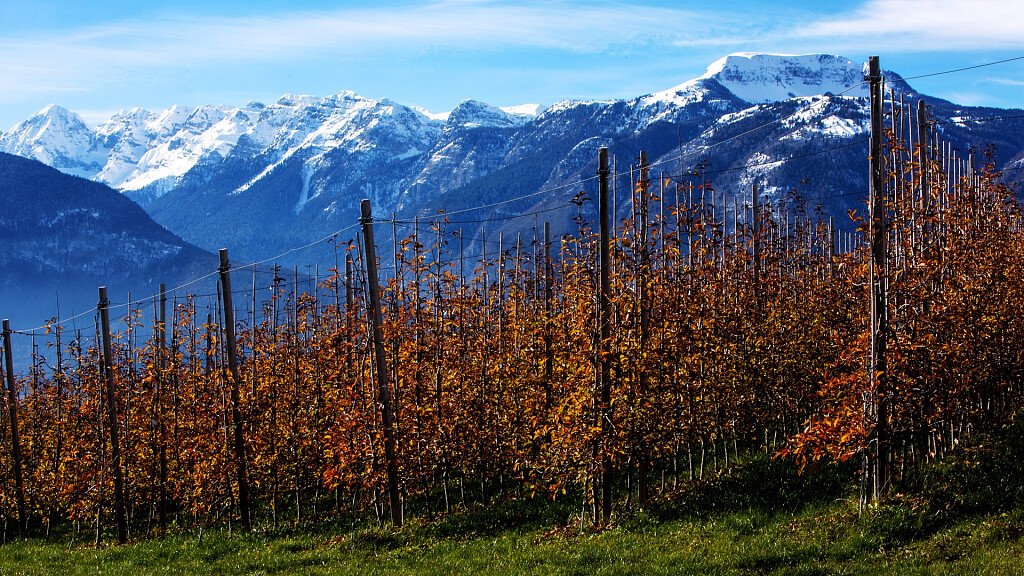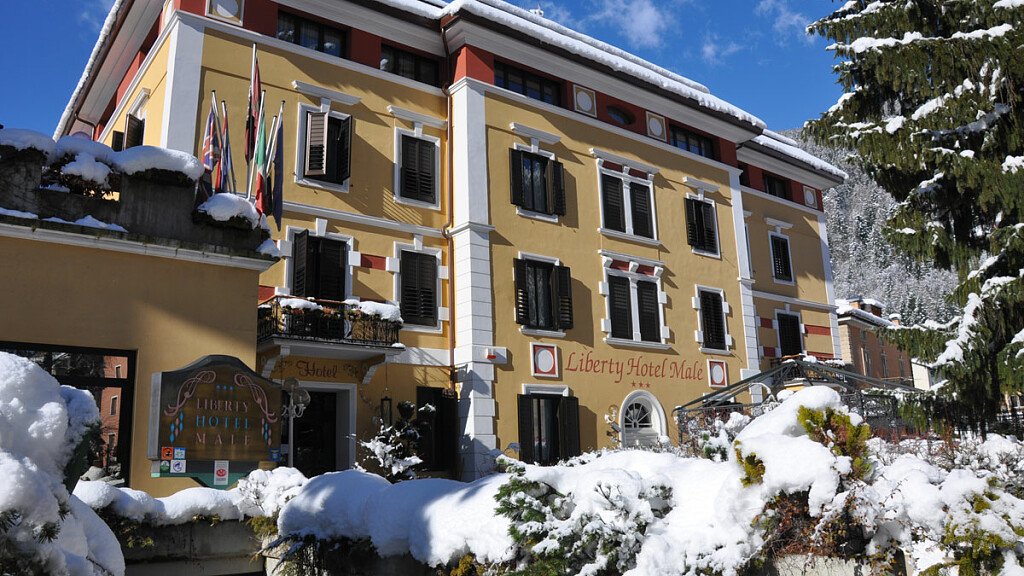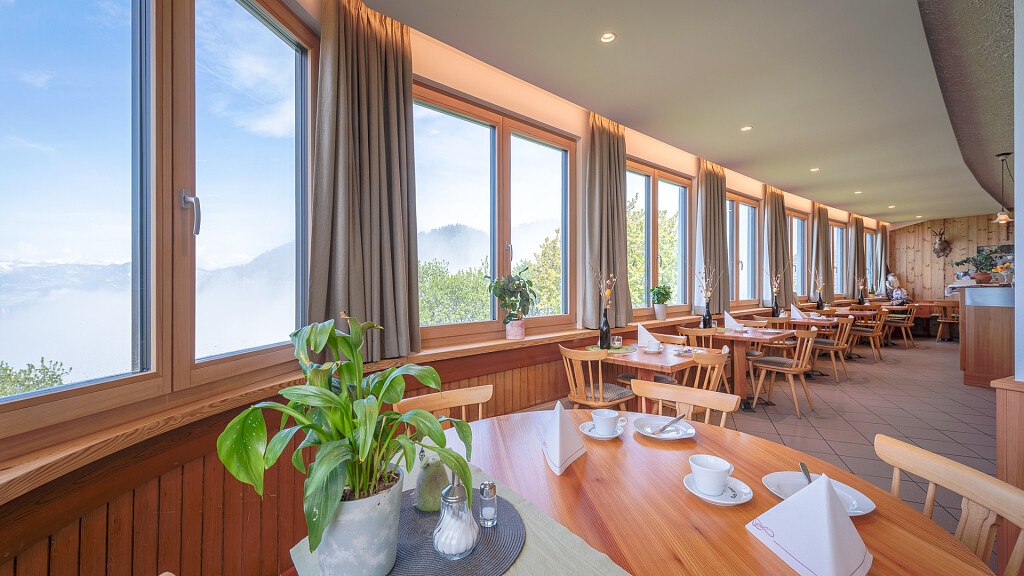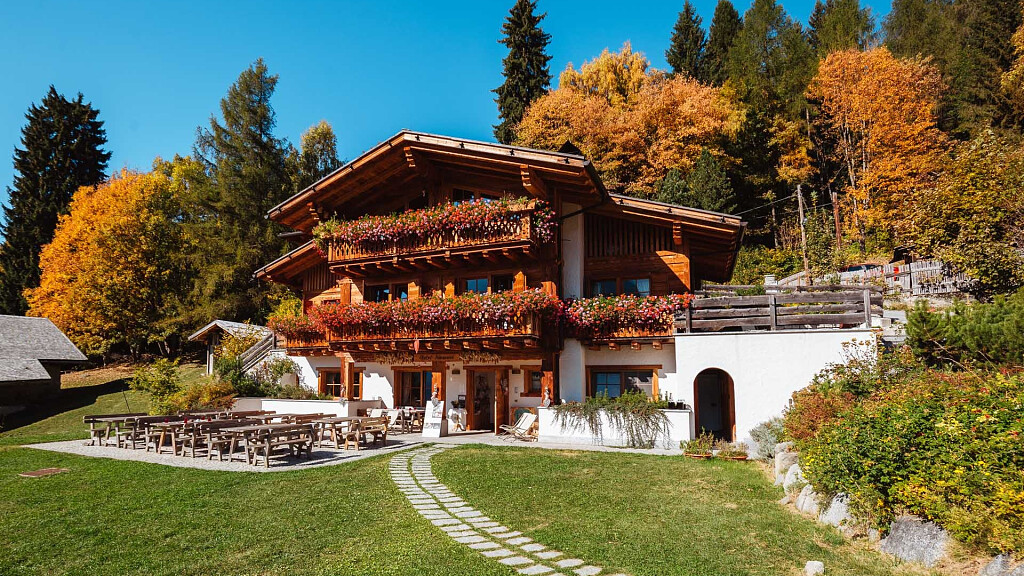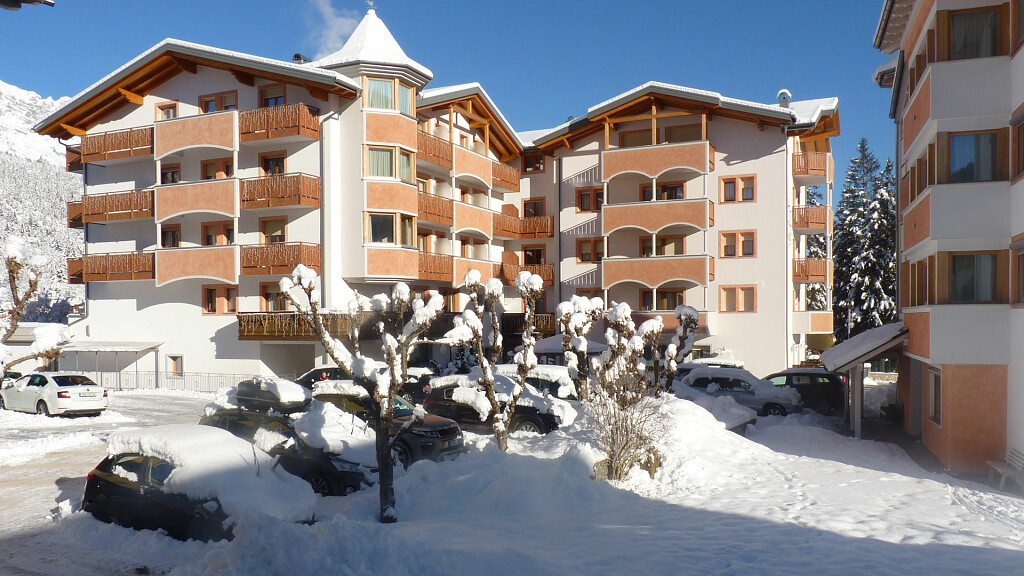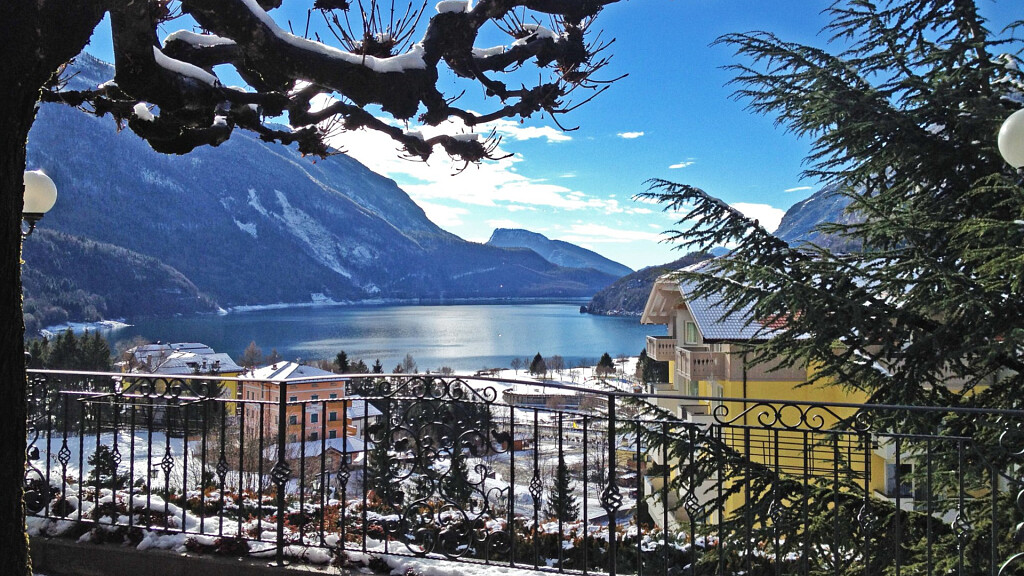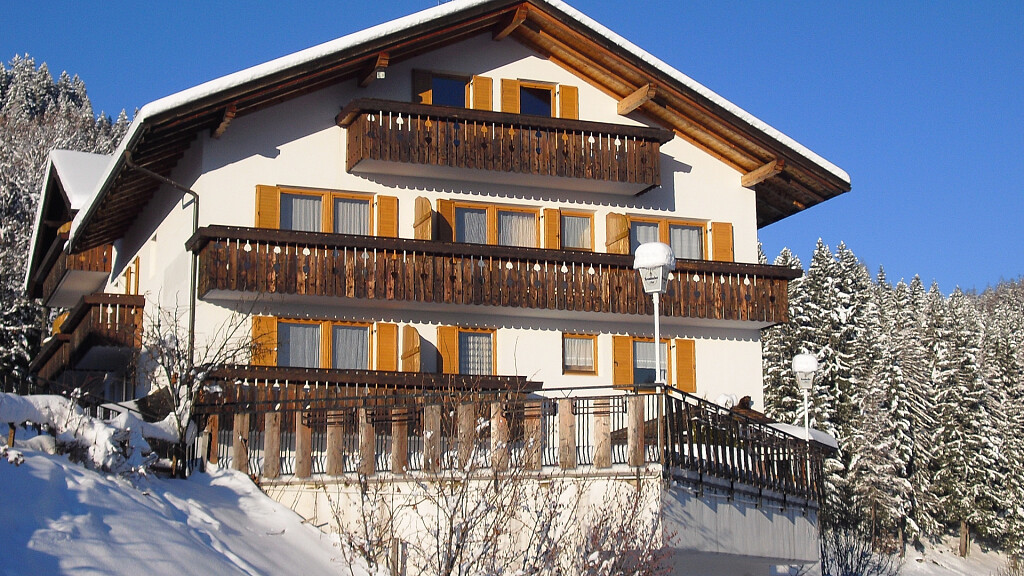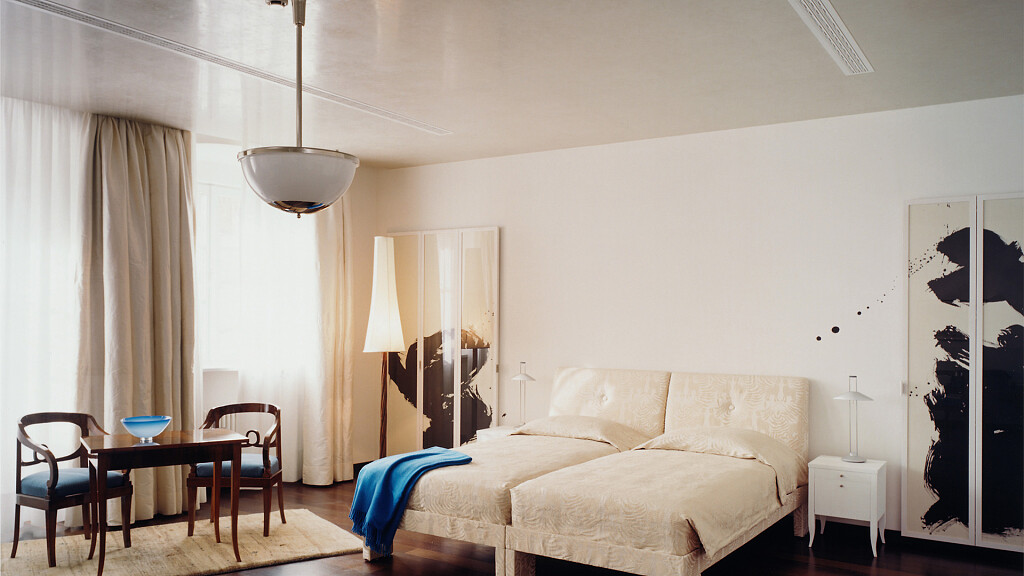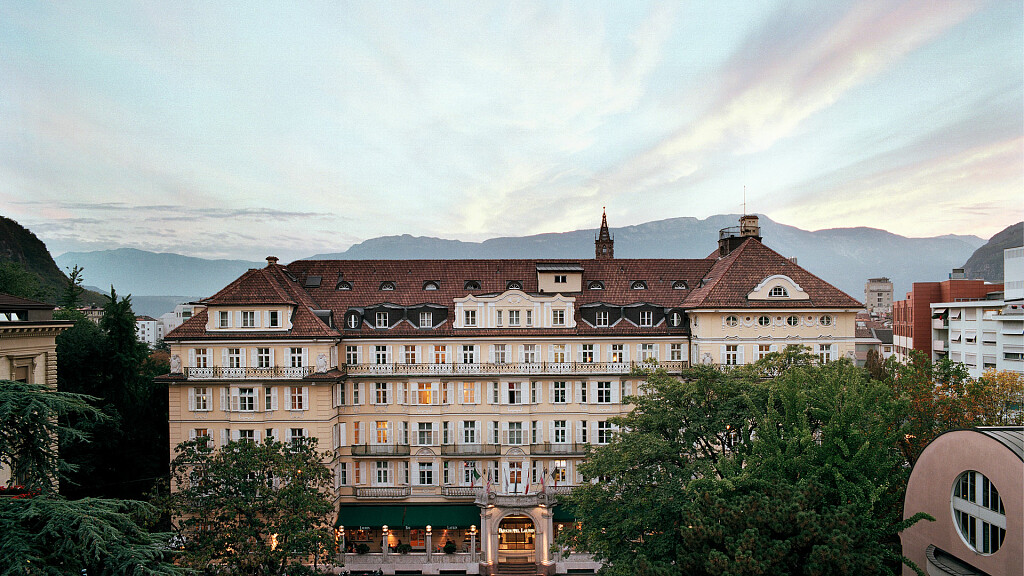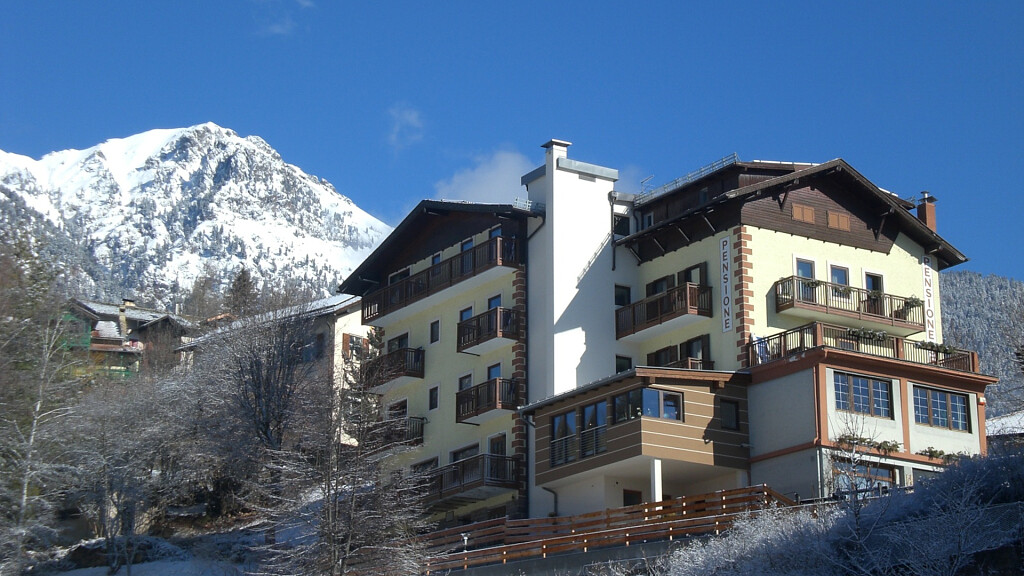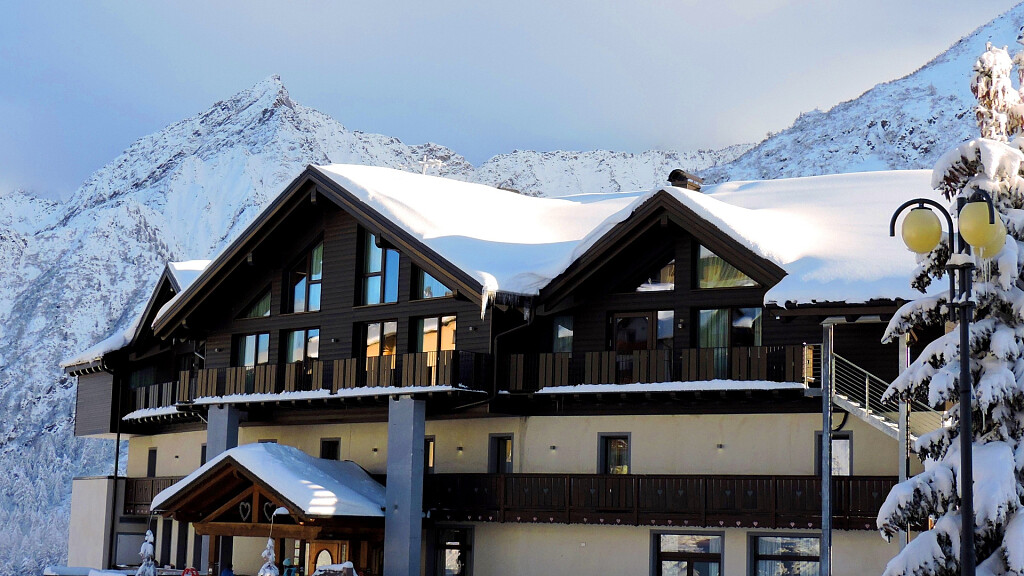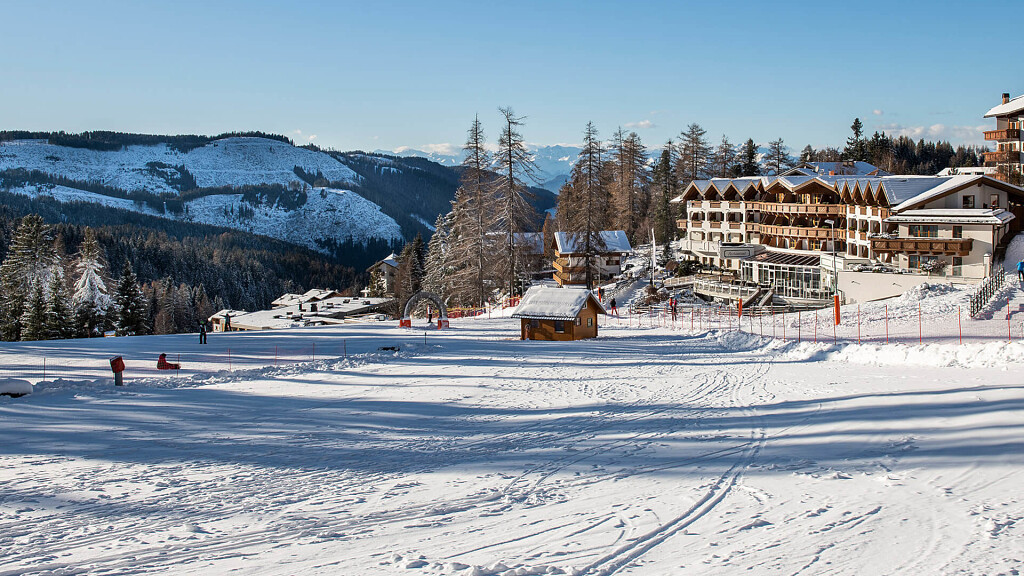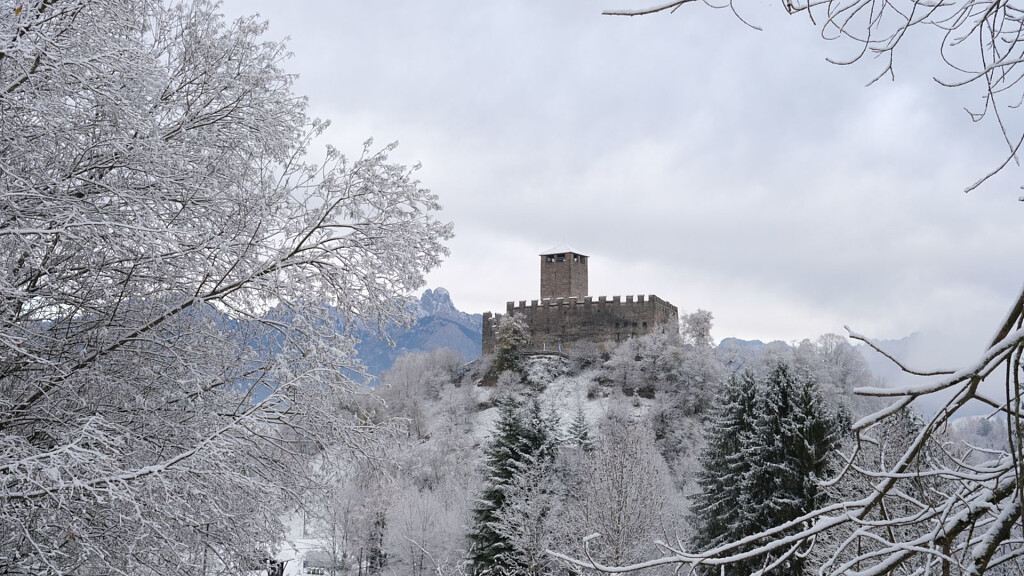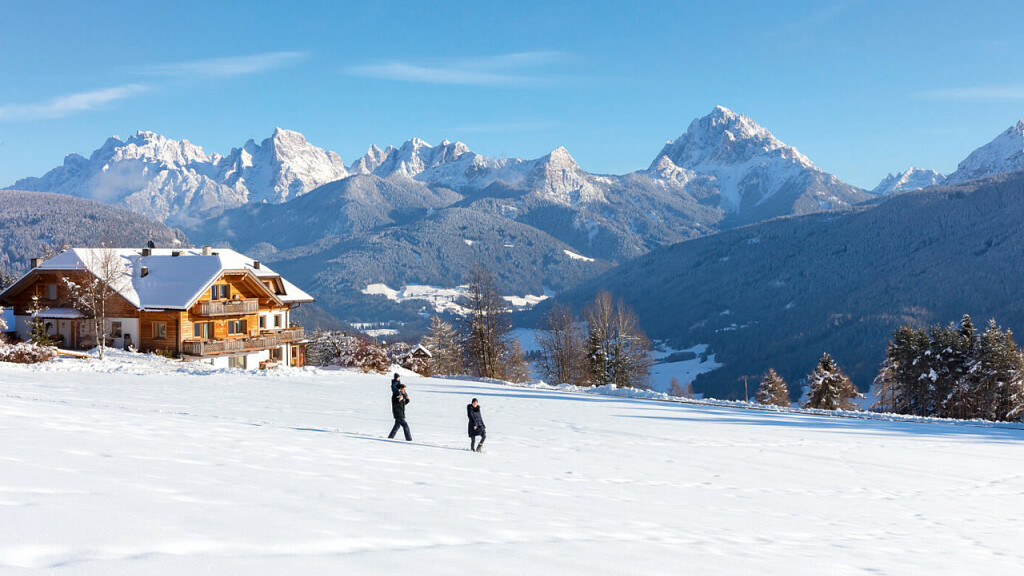The imposing S. Giustina dam was inaugurated in 1951 and since then has become the symbol of Valle di Non. This wide reservoir was created to gather the waters of the Noce river and generate electric energy.
You can reach the dam by car - it just takes a few minutes from Dermulo, thanks to the SS. 43 main road that flanks the lake in one of the most narrow tracts of the gorge. From the bridge one gets a nice view both on the dam and on the ravine below. The reservoir is 152 m. high and can contain up to 172 million cubic metre of water. Not far away, you see the high and elegant bridge of the Trento-Malé railway, a masterpiece of modern technology.
The place gets its name from the S. Giustina hermitage, situated in the gully at the foot of the dam. You can get there on foot from the centre of Dermulo in about one hour and 30 minutes, following a steep path that leads to the mysterious ruins, sheltered by a natural rocky hollow.
The hermitage, whose existence has been documented since 1537, was a popular destination for pilgrims in occasion of feasts or disasters, and was inhabited until 1782.
Even if it is a hydroelectric basin, the lake also offers many relax and hiking opportunities: a large green leisure area has been fitted out on the south-west shore - accessible from the main road taking the unmetalled road at the junction to Coredo.
On the left lake shore, on a sunny plain, you find Cles, an important trade, industrial and farm centre, as well as the main town in the valley.
Besides the archaeological finds dating back to the Neolithic and Bronze Age, we mention the "Clesian Table" ("Tavola Clesiana"), a citizenship edict (46 A.D.), whose faithful copy can be observed on the square in front of the "Palazzo Assessorile", seat of the town hall.
This majestic building belonged to Family "Cles" and was already mentioned in some documents in 1356 and 1543, as it was rebuilt.
Later it became the seat of the representative of Valle di Non and Val di Sole for the bishop's cabinet. This was the richest period for Cles, thanks to its most famous citizen, Prince Bishop Bernard Clesio, the supporter of several public works and of the parish church "Pieve dell'Assunta", an ancient and monumental church in Gothic- Renaissance style.
The same family also owned the majestic Cles Castle, located on an isolated rise by the lake.

